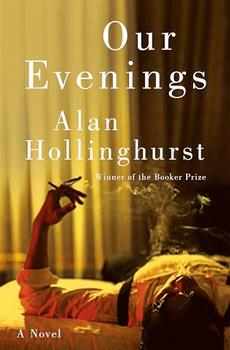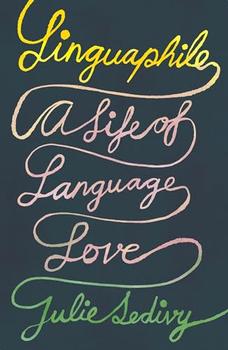Book Club Discussion Questions
Please be aware that this discussion guide will contain spoilers!
Theresa spends each summer day, with Daisy in tow, splendidly enchanting her bedraggled neighbors, the Moran kids; Flora, the angelic toddler of the local artist; Red Rover, Dr. Kaufman's half-witted golden retriever; and Rupert and Angus, Mr. and Mrs. Richardson's prim Scottish pups. Theresa creates a dreamlike haven for the children and pets where lollipops grow on trees, friendly ghosts visit in the night, and magical pink shoes banish bruises from poor Daisy's feet. Theresa's own dream sequence is interrupted, though, as she discovers her sexual desires, the impending death of her favorite cousin, and the neglected longings for love of the deprived children for whom she cares.
- How old is Theresa as she narrates her memoir? In what time period is the novel set? How were you able to figure this out?
- Discuss McDermott's writing style. Why doesn't she separate the novel into chapters? Would you describe her language as poetic? Is it easy to understand?
- Theresa describes herself as "pretty, intelligent, mature in speech although undeveloped physically (another plus), well immersed in my parents' old-fashioned Irish Catholic manners (inherited from their parents, who had spent their careers in service to this very breed of American rich), and, best of all, beloved by children and pets" (p. 14). Describe Theresa's other characteristics. How does her personality develop throughout the novel?
- "He might well have been a genius, a famous artist, a man whose signature and doodles were valuable, but I was fifteen and pretty and I didn't doubt for a moment that I was the one with the advantage here" (p. 22). How does Theresa use her good looks to manipulate people? Does she do it intentionally?
- Theresa acknowledges that her parents are "wary . . . of what they must have believed was the fast-approaching time of my fulfillment of their dream for me—of my absorption into that world they had taken so much trouble to place me on the threshold of" (p. 33). Describe Theresa's parents. Do you find them superficial or genuine? Are they good parents? How do they compare to the other parents in the novel? What does Theresa think of her parents?
- How does Theresa's childhood compare to Daisy's, the Morans', the Kaufmans', and Flora's?
- "I would have thought the housekeeper was too old to be included in such talk, just as, a few minutes ago, I might have presumed I was too young and Flora's mother too elegant to speak such a word" (pp. 64–65). What does Theresa think of adults? Does she consider herself one? Would you describe this book as a coming-of-age novel?
- The name Theresa is prevalent in Catholic religious history. Do you think McDermott is making a reference to Saint Thérèse of Lisieux, a beautiful child of doting parents who entered the convent with special permission from the Vatican at age fifteen; or to Saint Teresa of Ávila, who partially recovered from a serious illness through the intercession of Saint Joseph; or to Mother Teresa, renowned caregiver of the sick and dying? McDermott references another saint as well—Saint Joseph, chaste husband of the Virgin Mary. Is McDermott referring to the artist with irony?
- Does Theresa consider herself better than Ana and the cook even though they are all employees of the house?
- "It was this watching that disturbed me, because in it I saw his belief that he could penetrate with his amused eyes the person I thought I was and find something more to his liking at the core" (p. 170). Theresa is acknowledging that the artist makes her feel as if she is no longer merely a pretty child, but a sexual being and a woman. Is Theresa afraid of growing up? Is she nervous about the sexual urgings developing between her and the artist? What does the artist find at her "core"?
- Do you find the love scene between the artist and Theresa disturbing?
- Bill, the young writer who visits Flora's father, asks Theresa, "Are you too young to know what's going on here? I mean, what the arrangement is" (p. 187). Is she too young? What is the arrangement?
- McDermott draws a number of secondary characters into the story. Why are Petey, Bernadette, Dr. Kaufman, Mrs. Richardson, and all of the others so important? Do you relate to any one character the best?
- How important is location to the novel? Are you able to visualize East Hampton? Can you imagine this novel set in any other location?
- Why does Theresa keep Daisy's ailing health a secret? How does this make you feel?
- "I wanted them scribbled over, torn up. Start over again. Draw a world where it simply doesn't happen, a world of only color, no form. Out of my head and more to my liking: a kingdom by the sea, eternal summer, a brush of fairy wings and all dark things banished, age, cruelty, pain, poor dogs, dead cats, harried parents, lonely children, all the coming griefs, all the sentimental, maudlin tales fashioned out of the death of children" (p. 180). Describe the emotions in this statement. Why does Theresa incorporate so much magic and fantasy into her life and the lives of the suffering children who surround her?
- What is Theresa's vision of love?
- Children are at the forefront of this novel. Why are McDermott's juvenile characters so captivating? Does she depict childhood realistically?
- At the close of the novel, we've lost the two central characters—Daisy to death, and Theresa to adulthood. How do these two forms of loss differ?
Copyright Picador Publishing. All rights reserved. Page numbers refer to the USA paperback and may differ in other editions.
Unless otherwise stated, this discussion guide is reprinted with the permission of Picador.
Any page references refer to a USA edition of the book, usually the trade paperback version, and may vary in other editions.




